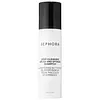What's inside
What's inside
 Key Ingredients
Key Ingredients

No key ingredients
 Benefits
Benefits

 Concerns
Concerns

 Ingredients Side-by-side
Ingredients Side-by-side

Water
Skin ConditioningAmmonium Laureth Sulfate
CleansingMaris Sal
Skin ConditioningCocamidopropyl Betaine
CleansingPolysorbate 20
EmulsifyingPanax Notoginseng Root Extract
HumectantGlycerin
HumectantCitrus Aurantium Dulcis Peel Oil
MaskingCitrus Paradisi Peel Oil
MaskingTocopherol
AntioxidantCamellia Sinensis Leaf Extract
AntimicrobialCamellia Sinensis Flower Extract
PerfumingLitsea Cubeba Fruit Oil
MaskingCitrus Reticulata Peel Oil
MaskingParfum
MaskingHibiscus Rosa-Sinensis Flower Extract
HumectantHelianthus Annuus Seed Oil
EmollientCinnamomum Zeylanicum Bark Extract
AntimicrobialEugenia Caryophyllus Bud Extract
PerfumingCitric Acid
BufferingSodium Benzoate
MaskingPotassium Sorbate
PreservativeCurcumin
AntioxidantCitral
PerfumingLimonene
PerfumingWater, Ammonium Laureth Sulfate, Maris Sal, Cocamidopropyl Betaine, Polysorbate 20, Panax Notoginseng Root Extract, Glycerin, Citrus Aurantium Dulcis Peel Oil, Citrus Paradisi Peel Oil, Tocopherol, Camellia Sinensis Leaf Extract, Camellia Sinensis Flower Extract, Litsea Cubeba Fruit Oil, Citrus Reticulata Peel Oil, Parfum, Hibiscus Rosa-Sinensis Flower Extract, Helianthus Annuus Seed Oil, Cinnamomum Zeylanicum Bark Extract, Eugenia Caryophyllus Bud Extract, Citric Acid, Sodium Benzoate, Potassium Sorbate, Curcumin, Citral, Limonene
Water
Skin ConditioningCocamidopropyl Betaine
CleansingCocamide Mea
EmulsifyingPotassium Cocoyl Glycinate
PEG-7 Glyceryl Cocoate
EmulsifyingHexylene Glycol
EmulsifyingSodium Chloride
MaskingPolysorbate 20
EmulsifyingOlive Oil PEG-7 Esters
EmollientButylene Glycol
HumectantParfum
MaskingEthylhexylglycerin
Skin ConditioningCaprylhydroxamic Acid
Cetylpyridinium Chloride
AntimicrobialTropolone
Skin ConditioningCellulose
AbsorbentAlthaea Rosea Flower Extract
Skin ConditioningPerilla Frutescens Leaf Extract
MaskingPerilla Ocymoides Leaf Extract
TonicChamomilla Recutita Extract
Skin ConditioningGlycyrrhiza Glabra Root Extract
BleachingCentella Asiatica Extract
CleansingTaraxacum Officinale Leaf Extract
Skin ConditioningPanax Notoginseng Root Extract
HumectantSaponaria Officinalis Extract
Skin ConditioningBupleurum Chinense Root Extract
AstringentSalicornia Herbacea Extract
Skin ConditioningAlgae Extract
EmollientHizikia Fusiforme Extract
Skin ConditioningCodium Fragile Extract
Skin ConditioningWater, Cocamidopropyl Betaine, Cocamide Mea, Potassium Cocoyl Glycinate, PEG-7 Glyceryl Cocoate, Hexylene Glycol, Sodium Chloride, Polysorbate 20, Olive Oil PEG-7 Esters, Butylene Glycol, Parfum, Ethylhexylglycerin, Caprylhydroxamic Acid, Cetylpyridinium Chloride, Tropolone, Cellulose, Althaea Rosea Flower Extract, Perilla Frutescens Leaf Extract, Perilla Ocymoides Leaf Extract, Chamomilla Recutita Extract, Glycyrrhiza Glabra Root Extract, Centella Asiatica Extract, Taraxacum Officinale Leaf Extract, Panax Notoginseng Root Extract, Saponaria Officinalis Extract, Bupleurum Chinense Root Extract, Salicornia Herbacea Extract, Algae Extract, Hizikia Fusiforme Extract, Codium Fragile Extract
 Reviews
Reviews

Alternatives
Ingredients Explained
These ingredients are found in both products.
Ingredients higher up in an ingredient list are typically present in a larger amount.
Cocamidopropyl Betaine is a fatty acid created by mixing similar compounds in coconut oil and dimethylaminopropylamine, a compound with two amino groups.
This ingredient is a surfactant and cleanser. It helps gather the dirt, pollutants, and other impurities in your skin to be washed away. It also helps thicken a product and make the texture more creamy.
Being created from coconut oil means Cocamidopropyl Betaine is hydrating for the skin.
While Cocamidopropyl Betaine was believed to be an allergen, a study from 2012 disproved this. It found two compounds in unpure Cocamidopropyl Betaine to be the irritants: aminoamide and 3-dimethylaminopropylamine. High-grade and pure Cocamidopropyl Betaine did not induce allergic reactions during this study.
Learn more about Cocamidopropyl BetaineWe don't have a description for Panax Notoginseng Root Extract yet.
Parfum is a catch-all term for an ingredient or more that is used to give a scent to products.
Also called "fragrance", this ingredient can be a blend of hundreds of chemicals or plant oils. This means every product with "fragrance" or "parfum" in the ingredients list is a different mixture.
For instance, Habanolide is a proprietary trade name for a specific aroma chemical. When used as a fragrance ingredient in cosmetics, most aroma chemicals fall under the broad labeling category of “FRAGRANCE” or “PARFUM” according to EU and US regulations.
The term 'parfum' or 'fragrance' is not regulated in many countries. In many cases, it is up to the brand to define this term.
For instance, many brands choose to label themselves as "fragrance-free" because they are not using synthetic fragrances. However, their products may still contain ingredients such as essential oils that are considered a fragrance by INCI standards.
One example is Calendula flower extract. Calendula is an essential oil that still imparts a scent or 'fragrance'.
Depending on the blend, the ingredients in the mixture can cause allergies and sensitivities on the skin. Some ingredients that are known EU allergens include linalool and citronellol.
Parfum can also be used to mask or cover an unpleasant scent.
The bottom line is: not all fragrances/parfum/ingredients are created equally. If you are worried about fragrances, we recommend taking a closer look at an ingredient. And of course, we always recommend speaking with a professional.
Learn more about ParfumPolysorbate 20 is made by combining ethoxylation of sorbitan, ethylene oxide, and lauric acid. It is a mild cleansing agent, surfactant, and emulsifier.
As a surfactant, it helps collect dirt and oils for washing. Emulsifiers prevent oils and water from separating.
Polysorbate 20 also adds scent to a product. Since it is made using sorbitol, it has a sweet scent. Sorbitol can also be found in fruits such as apples and peaches.
The lauric acid used to create Polysorbate 20 is often derived from coconuts.
Polysorbate 20 may not be fungal acne safe.
Learn more about Polysorbate 20Water. It's the most common cosmetic ingredient of all. You'll usually see it at the top of ingredient lists, meaning that it makes up the largest part of the product.
So why is it so popular? Water most often acts as a solvent - this means that it helps dissolve other ingredients into the formulation.
You'll also recognize water as that liquid we all need to stay alive. If you see this, drink a glass of water. Stay hydrated!
Learn more about Water